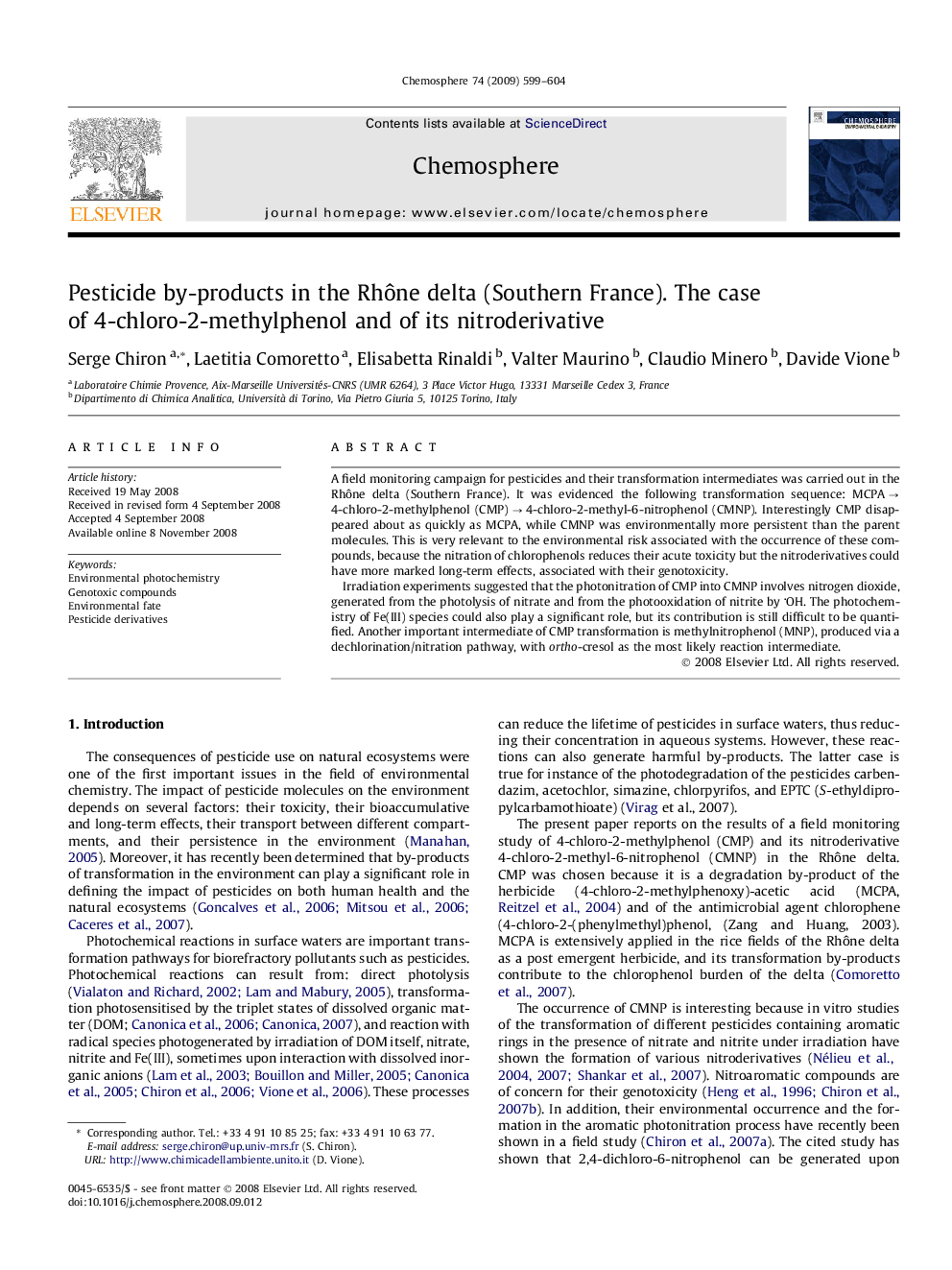| Article ID | Journal | Published Year | Pages | File Type |
|---|---|---|---|---|
| 4412642 | Chemosphere | 2009 | 6 Pages |
A field monitoring campaign for pesticides and their transformation intermediates was carried out in the Rhône delta (Southern France). It was evidenced the following transformation sequence: MCPA → 4-chloro-2-methylphenol (CMP) → 4-chloro-2-methyl-6-nitrophenol (CMNP). Interestingly CMP disappeared about as quickly as MCPA, while CMNP was environmentally more persistent than the parent molecules. This is very relevant to the environmental risk associated with the occurrence of these compounds, because the nitration of chlorophenols reduces their acute toxicity but the nitroderivatives could have more marked long-term effects, associated with their genotoxicity.Irradiation experiments suggested that the photonitration of CMP into CMNP involves nitrogen dioxide, generated from the photolysis of nitrate and from the photooxidation of nitrite by OH. The photochemistry of Fe(III) species could also play a significant role, but its contribution is still difficult to be quantified. Another important intermediate of CMP transformation is methylnitrophenol (MNP), produced via a dechlorination/nitration pathway, with ortho-cresol as the most likely reaction intermediate.
